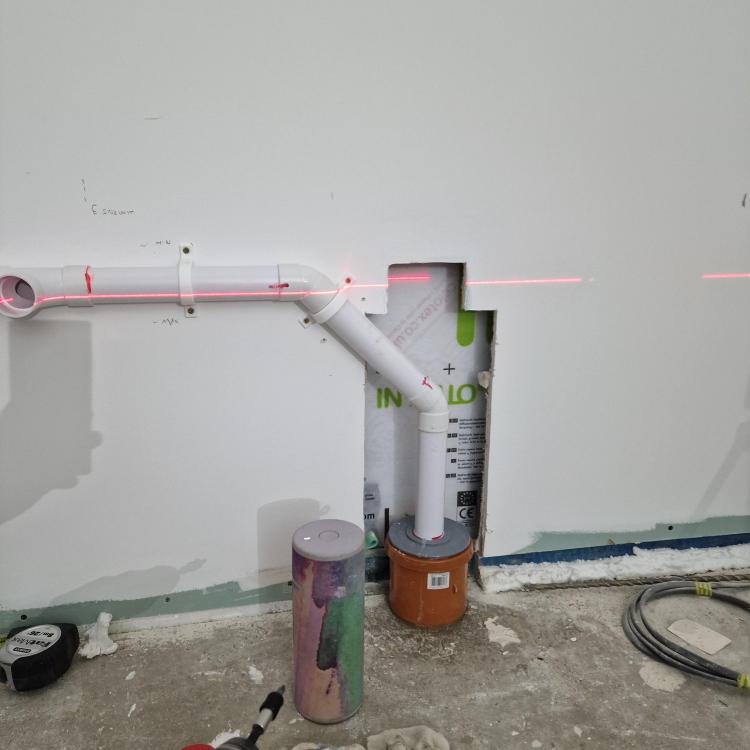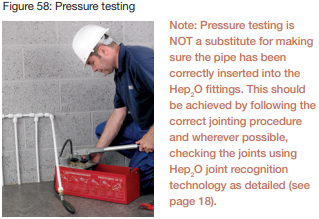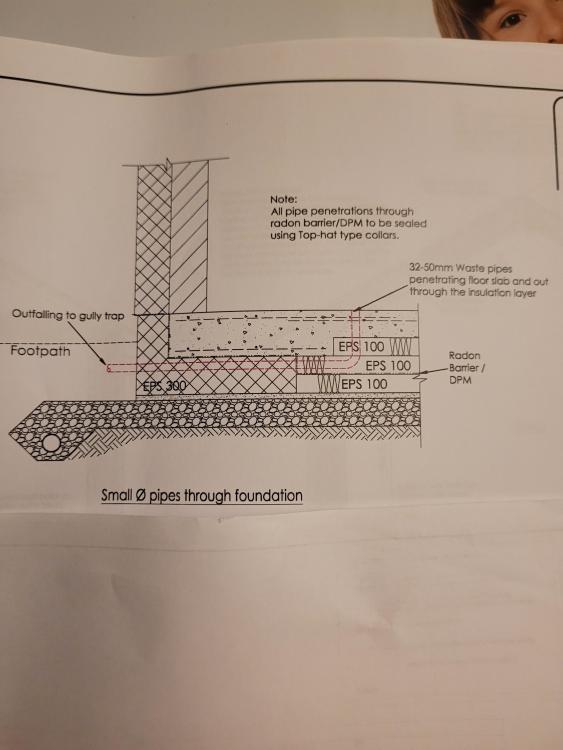Leaderboard
Popular Content
Showing content with the highest reputation on 03/14/23 in all areas
-
Cast iron rule. You attend. Cast iron rule. You make your case. Cast iron rule. You make every single word of the case count. Cast iron rule. You practice what you want to say in front of a competent Critical Friend. Cast Iron rule. Make them reject you , dont by your absence make it easy for them to reject you.4 points
-
@Susie@Alan AmbroseEncouraging reply from Sevenoaks Building Control Thank you for your email. The regulations are what we use as a guide for ‘conventional’ construction. Where you are building a Passive House we would certainly favour the PHPP compliance as it is much more appropriate for the mechanics of a passive house. Provided that overheating is considered as it would be, we would have no objection to you demonstrating compliance via another set of principles outside of Part O. I hope that this helps3 points
-
Find out who your councillor is and get them on side ASAP. The chair will ask if they want to comment as the local representative so you need to know if they are going to shoot you down and be prepared for it. Remember ONLY planning policy is relevant. Nothing else. If it goes against you the more (expletive deleted)ups they make that you can use against them at appeal the better. Personally if there is a remote chance of rejection id be employing a planning specialist to present on my behalf. They will ensure grounds needed at appeal will have been highlighted in the correct manner at the meeting. No playing games with this you need the right people.3 points
-
The iteration of even the Simplified model could end up being expensive. Similar to @Susie, my design failed at the first attempt. It then becomes a process of tinkering with sizes and openings to get a pass. It can be a challenge since reducing glazed area to meet the 'Total Glazing area for home' limit of 15% of Gross Internal Area also affects the 'Removal of excess heat' requirement to have opening apertures. Chasing your tail. Like Susie, I found that I needed to make more windows openers, and some internally opening to overcome the restriction that outward openers are limited by 'the handle must be within 650mm of the internal face of the wall' rule. That rule impacts the effective aperture, whereas an inward opener benefits from the whole aperture. I'm having brise soleils and MVHR on my passive house build, but the Simplified model allows no benefit for either. Fortunately, I didn't need to compromise on much to get a pass, but it may still cost money as openers are more expensive than fixed panes. I'm waiting to find out of the LPA will accept PHPP for Part O.3 points
-
You do NOT want to have small bore waste pipes going down and exiting the slab. You need to bring 110mm runs in, in the subbase, and then have 110mm pipe rising vertically, then reducing down in the upper portion of the slab. PVC waste pipe and UG 110mm pipe are two very different materials / beasts, so an absolute "NO" to bringing these out of the foundation, if subterranean.2 points
-
Wow, fantastic result! Now I just have to convince East Suffolk LPA to take the same approach... Also v. useful to know that BC have some flexibility and don't need to adhere slavishly to the 'rules'.2 points
-
Clogged with what? Has the ground level been raised around them and leaves and stuff is blowing into them? If so, that issue may need fixing first.2 points
-
I am in the state at the moment of wondering why...... I never realised it was going to be so complicated to get all the paperwork sorted just to lay some blocks with holes in for windows and doors and a roof on top and preferably some heat, cooking and washing facilities, but I would even have considered giving up on those at some point. Due to the complete lack of time we decided that the builder (HID) would take voluntary redundancy and early retirement and then build the house himself. Trying to do this evenings and weekends was just impossible with us both working full-time with an hours commute each way, no home working for us. So, in a few short weeks I'll be the bread-winner thanks to a new job (home working) with more money and HID cashing in a pension policy and HID can build full-time. Or, so we thought. We have planning We have SE drawings We have BC drawings - or so I thought. I contacted our appointed BC (private) and he said great, but can I have .......... This is before we can dig any trenches even. I know that we need to make the decisions on windows, doors, roof, floors, insulation, fire control and engine turning circles and access, water, power as well as many other things. But, I didn't realise that some of this is needed before doing anything. We do have the foundations specified and have sourced blocks, concrete etc for that. So, it's back to the architect to find out about the rest of the BC drawings, apparently what he sent was the overall plan, not the details and to get those we need to go back to the SE with some questions. It seems that there are lots of books out there for self building, but none of them cover all the preliminaries that are required and we just didn't know. The site is prepped, we have got quotes from builders merchants about blocks, concrete suppliers about concrete and pumps, looked at U values. Also, ASHP, MVHR, UFH, and countless other acronyms, but not signed anything. As a barn conversion we have to use as many existing walls as possible, but we do have 1 1/2 sides that never had a wall. I stupidly thought, well we can build those up and then continue on the existing ones that need underpinning, seems that's not how it's done, why not. So, it's back to the drawing board, literally, so work out what I don't know that I need and get it somehow. It's also frustrating that all these professionals have the luxury of working Monday to Friday so when I'm free they are not and when they are free I'm working. Good luck to all you self-builders how there and hope you have more luck than us.1 point
-
1 point
-
Well, that was fast. All switched over :D. So, battery set to charge 2-4:59am and 3-3:59pm; and to force-discharge 6-6:59pm. Heat pump set for DHW 2-3am, and to let the house cool down a bit (not much) 4-7pm. I *think* it also makes sense to bring the house to 20°C between 3-4:59am, in the hopes of coasting until the solar shows up, certainly for March-April and Oct-Nov, but less sure about that. I'm really not keen on being very warm overnight. Might give it a try though. The only other thing to do is add more batteries :3.1 point
-
70mm screed 100mm insulation 25mm sand blinding 125mm concrete slab (with A252 mesh) How about. ( With your SE's approval) 100mm concrete slab with mesh Slip membrane 300mm eps/200mm PIR DPM This is what the builder did on ours.1 point
-
1 point
-
Not really, in my experience the planning process must have been the original inspiration for IT project management approaches, especially Prince, but then they gave up and decided on the make it up as you go along, which had to be called something that sounds like it's well intended...and along came Agile. I think you have the right experience.😉😁 Do you have the chance to attend a committee meeting in advance? Can be useful to determine the trouble makers and who seems to influence the rest of them. I had a funny experience with mine in that the most troublesome and cantankerous took me totally my surprise and loved our project - once she'd shouted out her like of it, the rest just fell into line like dominos except for the weaker ones who ducked under their desks and abstained. If it weren't so sad, it would be a comedy. This particularly councilor had only 5 minutes earlier stressed that the committee must respect and go by the Parish council's view, thereby denying a different application. In ours she didn't give a mickey about the Parish council's objection. Edit: Ah, I see that @Temp got in there with this as I was writing.1 point
-
Nobody said you needed to put a load of holes in the wall, someone just needs to do the calcs. How do you know if the appliances are getting enough air? Usual calculation for what is called adventitious ventilation - e.g. leaky house - is assumed 7kW and equivalent to 35cm2 open area. The reason for the ventilation is in part to ensure you have enough air to breathe and the appliance has enough air to breath so that it combusts the gas properly - if it doesn't then things can get even more dangerous. As above, you clearly don't know this and are just guessing, nor do you know the answer to your original OP. 😉 A Gas Safe engineer would be able to do the calcs in less than 20 minutes - so a cost of probably less than £60 and then at least you're not left guessing any more.1 point
-
Yours may be the first one they've ever seen, but I'm sure it's accurate. And they may not even check it matches the drawings. And they may not check the exact dimensions when the BCO is on site. Do let us know how you get on. About £1500 for two iterations. I was very tempted to do the PHPP modelling myself since I'm a nerd, but I ended up using a local-ish consultant as he had also recently built his own house and could give advice on some other aspects of the build process. PHPP aims to provide a scientific method to guide designs to fit into the goldilocks zone without the shaky guesswork, and negates the need for Design SAP/Part O fees.1 point
-
1 point
-
That is why you have a large coil in your cylinder, the cylinder becomes the engaged volume. You don't need a volumiser or buffer on the DHW side of the system. It is normal to have a buffer on the central heating side of the 3 way valve. I think I have added the CO2 manual for you. Chofu-Operating-Installation-Manual.pdf1 point
-
That cad block is actually my fault I think I added that one.1 point
-
To give you an idea of the process I used to design my system. My 6kW heat pump is located 10m from the house. Have run 28mm from HP to house (10m each way), then dropped to 22mm inside house (500mm), short run to a 22mm 3 way valve, then 500mm to UFH manifold. Not using mixing valve and pump on UFH (many will not like that). From the 3-way valve to cylinder is a further 10m and is already existing in plastic 22mm, so my pressure drop is at the end of that allowable for the ASHP circulation pump, so have installed a second pump on the return leg to run only in DHW heating mode. This will be run at a constant volume flow. I downloaded pressure drop charts for the different pipes, bends and calculated the system pressure drops to make sure I was ok on the curve for the flow required. You need a buffer if the smallest possible open circuit volume is below the minimum volume specified within the manual. The more you are over this volume the better. I will have over 60l circuit size, so will not use a buffer. My Manifold will have no actuators on it so will always be open. I would if you can, keep it simple Try not to keep it simple. Generally keep it as simple as possible, if you only have UFH and no radiators just run on weather compensation.1 point
-
How small is a "small" unit? Stick with the min pipe size to match the HP tappings as per the Grant instructions here, which is 3/4 in or 22mm for the smallest. There are also the Chofu instructions here which do show UFH but unlike the diagram on p14 you could omit the blending valve. As @DanDeeimplies this is only required for a boiler flow at ~60C, then you do not need a secondary pump or LLH either. As you will see from the curves on p13 even the 6kW unit has a pump easily able to push 16 l/s against a sizeable pd, actually it can develop a higher pressure than the 10kW. Grant do stipulate using a volumiser, you will still need this to prevent short cycling on DHW only. On p13 they say install it on the flow if it has an auxiliary heater, however on p18 they show it on the return which has lower losses, there are extensive discussions about this on this forum. Good luck, let us know how you get on!1 point
-
UFH manifolds with a circulating pump and a temperature blending valve should be used. I used 22mm pipe but the plumbers may have a better recommendation. the Grant install manual will specifify the minimum system volume, they sell their own "volumiser" that can be used as s a simple extra volume or piped as a low loss header, again I will leave that to the plumbers.1 point
-
PS If that sounds unappreciative it wasn't meant to be. I am very impressed how much time people give to this forum. Its just that I know our place is a long way on the safe side of the CO risk spectrum.1 point
-
Yup, as long as you're comfortable doing it (like Susie and I were). But for those like @Canskiwho wish to outsource, it's worth nailing down what the quote covers since it's quite possible that multiple iterations are required. I'll let you know....1 point
-
I got planning permission for conversion of three barns into a home in 2007. I converted a small byre, part of that project, in 2010 to comply with the condition to start work within 3 years. Building control signed the building off, which in hindsight was a mistake as It should have been part of the whole project and signed off when the rest was finished. Fast forward to 2022 and the entire project was nearly finished ( I was forced to get my Architects Certificate signed prematurely as the Architect was retiring at 88 !) I didnt know if I could make a successful VAT claim because the project had essentially started in 2010, been signed off, and no claim with the required 3 months made. I came across Andrew after some online searching. Andrew McDonald MAAT FCCA SELF BUILD VAT 33 Ocean Way, Pennar, Pembroke Dock, Pembrokeshire SA72 6RA Tel: 01646 687599 He is a self builder, and an accountant. He talked me through the rules and advised that I had a good chance of a claim, on all the building work EXCEPT the small byre completed in 2010. He was clearly used to challenging the revenue- in court if necessary, if he felt they were not applying the rules correctly. I sent him all my invoices, and he prepared the spread sheets and made the claim, with appropriate covering letter. As my build wasnt finished entirely due to my elderly Architect forcing my hand, I continued to rack up bills after the claim was made, which had significant VAT attached. After about six months of waiting for my VAT refund- to no avail, I contacted Andrew and mentioned I had more bills. He argued that the claim process was a two way street, and it was unreasonable for the revenue to refuse to add these claims to the original claim, as they had been keeping me waiting so long. A further collection of invoices was submitted, the VAT element of which, came to over 3K. Twelve months after Andrew lodged my claim with HMRC, I received a full payout of 16K, with no queries or rejections. I am of course delighted, and felt I should share the details of this superb professional contact. Andrews fee was a very modest £500.00. This account is entirely my own personal experience and I have no other relationship with Andrew other than as client. In fact I have never even met him in person ! I hope my experience is of interest to other self builders. Simon.1 point
-
I also registered interest, but didn't get an email, saw it mentioned on another forum. Perhaps they're just trying limit signs to an amount they can manage.1 point
-
And thus the reason why I (and others) make the effort to support BH members in their applications for refunds from HMRC. If I, or any members of the teaching teams I worked with, had ever applied logic the way HMRC does (consistently inconsistently) , we would have lost our licence to practice. VAT Reclaims from self-builders is too small a Public Policy backwater for politicians to feel its worthwhile putting a bit of stick about. No votes in it.1 point
-
Bought Amtico from ebay and stuck it down myself. It needs to be super flat so SLC is a must I think. It's only been 2 years but I suspect it'll last until the next ice age. We also have some click fit LVT from Pergo, oak effect, fitted floating not glued. Much simpler to fit but nowhere as tough as the Amtico. Also floating wouldn't be my choice again as it has bubbled slightly in 2 of the rooms. It is far warmer underfoot than normal tiles and substantially more forgiving for children falling and dropped plates etc.1 point
-
On a whim I filled that form in at the end of the week, and a blokey phoned today and will be calling tomorrow. Watch this space...1 point
-
To me it looks like a 45’ join, timber at the angle of the roof? Odd!1 point
-
But there’s lots of emotion at a planning meeting . You need the deliberate “ non technical “ side aswell . I was originally going to go technical along with architect . But we decided a dual approach from different aspects was better . On my planning committee as I’ve implied some had very little if any planning knowledge ( f knows how they get on it ) - so you need to appeal to them also .1 point
-
Sounds extremely familiar to me. Total shysters some local councillors ime. The councillors (all one party) unanimously refused it. Some clearly had not been to site/didn’t know where it was judging by comments. Local councillor spoke against it, neighbours who put him up to it didn’t show up. Says it all really. We even had the support of the planning officer. Who then had to argue it should be refused when it went to appeal. Ludicrous really. Needless to say we won at appeal, very nearly also winning compensation from the council.1 point
-
You attend . Use your 3 minutes wisely ( assuming that’s still the rule ) Your architect does the technical talk you do the “ heart felt “ talk1 point
-
I am sure the GBF will make some nice lentil broth to go with some long words. Or a lot if swearing, and inappropriate comments.1 point
-
@Petrochemicals Any member's reputation gets a bump when another member gives them an upvote like or thank-you for a contribution, and this enhances their reputation. It takes a lot of effort / contribution helping other members to get a reputation over 1K, let alone one of almost 4½K as in the case of Nick . The reason that "Anyone would think I'd touched a nerve" is very simple: you have done so by the tone and content of your replies. Perhaps you shouldn't disrespect people when you are seeking free advice from them. I suggest that the wise thing for you to do here is a reboot: try seeking help on another forum. This is my last comment on any of your topics.1 point
-
A lot, in fact, I did a BA in lighting design (and I had the opportunity to do a PhD) and specialised in it for about 15 years, although now I am a consulting building services engineer I still do a lot of lighting design as every project we do still needs lighting. Don't get too hung up on lux levels and uniformities and glare and what not for domestic lighting, even when I do domestic lighting I still just use my professional knowledge and best practise. The issue with domestic is that it is not used like typical commercial buildings, offices, it is an office, you light it like an office, or a warehouse, you light it like a warehouse. Houses are a different kettle of fish, you can put a single pendant kit into most rooms and that complies with what BC want to see. However, we all know we will add desk lights and table lights and floor lights. Kitchens are about one of the only rooms in a house that needs proper, as close to a "design" as you need for task lighting. If I am doing a kitchen in apartments etc. I usually go for about a 500-600lumen downlight, say 2.4m ceiling height, spaced at about 1000-1200mm in a row or array to suit along the counters - typically I will pull out a second row if there is a dining room table shown on the architects GA's. Bathrooms being about the only other room that needs dedicated properly "designed" lighting or else you are stuck with it. Corridors I would typically put the same in in about a 1200-1500mm spacing. I have my go to downlights for these applications and I know the optics will give me the right distribution to work in these spaces for me. Very occasionally I will fire up the lighting design software and do a quick check calc if I want to do something a bit different. "Design" when used in a domestic situation, to me and for many interior designers and even lighting designers is just picking nice lighting, and placing it in such a way to create some nice ambient and useable light. A well placed downlight to create a scallop of light down a tall wall above a stair, or a row of small (e.g. 35mm) down lights along an oak balustrade in a hall, or some recessed LED strip into shelfs. Dimmers are also your friend when it comes to domestic lighting as it lets you add all the light you want, but without the concern you might end up with your living room sitting a 600 lux!, however, make sure you pair your source and dimmer or you will have a hell of a time. I have often put in standalone DALI dimmers (Osram DALI MCU) with DALI driver luminaires to guarantee nice dimming and when done wisely, the over-cost is not that much. Houses, in my opinion should always be 2700-3000K light. I hate seeing 4000K (or worse) in domestic settings, however, that is my opinion, I think some people like the clinical look.1 point
-
The cost sounds not unreasonable to me. Simplified Method is simple-ish (say, an hour or so) once you have the window / door / room sizes. Do your quotes allow for iterations - it's likely that if you're over the limits, that you'll want to do a bunch of what-if calcs? So, if that's cost per iteration not so useful, if it's cost to get to a workable detail design, that's much better. Does 'dynamic thermal modelling' handle solar gain and shading? Who's the supplier, a bunch of us would be interested I'm sure? I think the various simulation packages (as opposed to 'Simple Method') may come up with quite different results, so it's possible some people will want to do 'simulation shopping' to get the most favourable results.1 point
-
So I'm in the middle of the sales cycle for my Home. The first buyer pulled out but after a month I lined up another. The market is doing well enough despite % increases. So I had the estate agent around today to perform a valuation, the Surveyor comes around on Monday for 90 minutes to inspect the property and I'll be ringing the solicitor to get an update on where the contracts are at! I'll feel a lot better with them signed and a move out date to close the deal (hopefully!). In the meantime I've been looking at my timeline. The main constraint is I've to be up at wall plate level by the End of July. Working back that meant getting deposits (through borrowing) to the Timber Frame Company now to do drawings to get line loads so I can supply them to the structural engineer for the Kore raft foundation system. They want a soil bearing test which doubles their fee but another structural engineer I was hoping to use is booked out for several weeks and I can't wait. I sent a deposit to the first one and yesterday finally get a quote from the second and their lead times are actually ok! Too late as I've deposits down but a few K wasted perhaps but what can you do. Time is money and hopefully I can recoup later on. Can't get a plumber for love or money to agree exact drainage penetrations through the foundations which I need soon. Might have to resort to posting plans on here to the plumbing section to get some answers, thank goodness for buildhub! Talked to a heating engineer today and was going for underfloor heating and ASHP with an option for fan coils (cooling mainly) but now am switching to Air to Air in the open plan area and the 1 bedroom I'll use as an office. Then get a dedicated Hot Water heat pump - the built in ones like Ariston Nuos / Dimplex. That'll be 4 x 200mm holes in the wall when I include the MVHR. But at least I'm confident removing the underfloor heating pipe work is not going to bite me and this should halve my heating system costs from 20K to 10K which is a major plus. The issue is ensuring DEAP/SAP software doesn't rule this out and it seems it's very hard to find anyone who can install/service it. The distributor is a few minutes away but they may not have anyone qualified to service it! Oh, the joys!! I've cleaned up the site and it's almost ready for action, once contracts are signed I'll take down the old side fence and gate and pull up the roots / dispose of the remaining soil by renting a digger & skip. Job done! Main learnings: I am going to wake up at 4am throughout this process while I grapple with various decisions and problems but it's only for 18 months (hopefully!) Simplify things where you can - no underfloor heating loop pausing foundation pour and no integrated PV means the flow of trades is easier (doing standard PV instead) Research as much as you can but a lot of the stuff I've learnt has been by accident - I've had an hour session with my Architect (despite not using them for the build), a famous media personality for a general pep talk (Harrison Gardiner) and the heating engineer today. I've to check fire ratings for plasterboard on ceilings and exterior walls and probably take a read through ALL the building regs for good measure. Have some fun! I might work 2 out of 3 nights on this but I definitely need to take time off or I'll burn out too fast. There are breaks here and there for builders holidays, waiting on windows etc I can use to prep for the next stages. Anyway, the fun is hopefully just around the corner!1 point
-
I would use ICF for the basement. For warranty, you might need at least two methods of waterproofing, and sometimes a sump pump.1 point
-
ICF for the basement wall would work nicely. If you add extra insulation to the outside of the sips a standard masonry foundation would work too.1 point
-
Very dependent on the local planners. They tend to look at the elevations so "filling in" the corner of an L shape house might be less objectionable that making one arm of the L longer because the overall size of each elevation hasn't changed. There is also a hard to pin down "thing" that makes some proposals just look massive compared to other houses of a similar size. Things like the proportion of windows to walls. Planners like extension to be subservient to the main house like this (eg slightly smaller in height and depth). I know you aren't doing an extension but its details like this that can help make a large place look smaller and more in keeping with the houses around it. There is a massive new house a few miles from us where the architect took this principle to extreme. The house consists of about 5 or 6 blocks each one subservient to the main house. I haven't been passed it in awhile but as I recall one is a room over an archway and that links to rooms above a large garage.1 point
-
I used the footprint of my existing house, and my permitted devl rights, to show what size footprint i could create. Because i am in greenbelt the planning officer used this as special circumstances to pass my proposal.1 point
-
All of the above and depends what mood the Planning Officer is in. Does your LPA have their own policies and guidance which relates to and states the relationship? There may also be similar guidance within the NPPF.1 point
-
Conversely, I find PTFE better for this 'stop when it points to 12 o'clock' situation. I turn the fitting in dry, counting the number of turns until it stops ( in the wrong place ). I then turn it back out and count the number of revolutions again to be sure. I PTFE the thread, with around 21 turns, and then count the revolutions when going back in, knowing which one is the last full revolution before it goes past and bottoms out. Served me well to this day, and I'll carry on doing this for the next ones.1 point
-
Thought I would update this for anyone that might come across this in the future - I had a couple of spare cills so soaked them with cleaning vinegar (neat) overnight to see if that would stain them - it did not so I tried the cleaning vinegar with a non abrasive brush this morning on the window itself and it cleaned up a treat. Who would've thought it would be that simple!1 point
-
1 point
-
0 points
-
and that's the core reason to present yourself as superbly-well prepared for your meeting. In command of the local agenda - the local micropolitics the Council micorpolitics a detailed understanding of all recent similar or related cases handled by the Officer concerned - another way of saying, quit the day job and focus on your Planning Application. My OH supervises PhDs. "For non-specialists, getting Planning Permission and building a house on your own is as demanding as any PhD"0 points
-
When I said I was referring to planning law, no one gives a toss if it is made from platinum or dog turds, or worse, straw.0 points
-
The 2018 version of PHPP also didn't have room by room analysis. It has "critical room" analysis for one room, for heating only. But PH is a whole-house philosophy and doesn't really think about rooms as individual units, especially not for cooling needs. So +1 @Nickfromwales about not getting lost while drinking passiv Kool-Aid0 points


.jpg.c21f3ac78c9b7efd90cbdcb312744dc5.thumb.jpg.7adcad4c0e384f5ecd7d56b0618df6e5.jpg)















